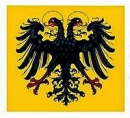jeudi, 04 décembre 2014
How Russia and Germany May Save Europe From War
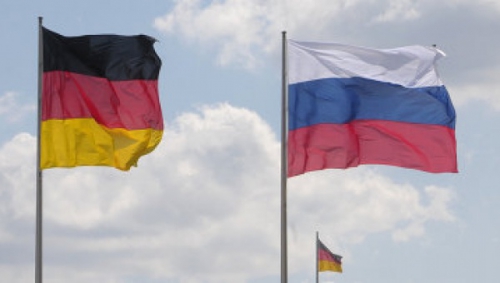
How Russia and Germany May Save Europe From War
By Pepe Escobar
Russia Today & http://www.lewrockwell.com
Are the US, NATO and Russia on a mad spiral leading to war in Europe? Is it inevitable? Far from it.
The US-propelled vassal Petro Poroshenko, currently starring in the oligarch dance in Ukraine this week advanced the proposition that Ukrainians in the near future, after his “reforms”, will be asked to vote on whether to join NATO.
Let’s be serious here. Some of you may be familiar with the concept of “shatter belt” – territories and peoples that historically have been squeezed between the Germanic Eagle and the Russian Bear.
As we stand, the whole shatter belt – apart from Ukraine and Belarus – has become NATO members. Were Ukraine to become a NATO member in – albeit remote – future, the shatter belt buffer zone would disappear. This means NATO – essentially the US – planted right on Russia’s western border.
Washington has just announced that it will be pre-positioning more military vehicles in Europe, to be used in exercises or “potential military operations.” This is perfectly in tune with the relentless US “think tank-land” spin that NATO and the US will be “forced” to balance their commitment to security in Eastern Europe against potential Russian “aggression.”
As Ukraine, the Baltic States and Poland persist in compounded hysteria about such “aggression,” the option of a post-MAD (Mutually Assured Destruction) US-Russia nuclear war is now – casually – back on the discussion table. At least there’s a countercurrent; strands of informed Americans are wondering why the US should be paying for Europe’s defense when European GDP is larger than the US’s.
Wanna play war, boy?
Now for the “threat” of nuclear war in Europe – bogus or otherwise. It’s pointless to compare the US and Russia strategic nuclear capabilities based on numbers, but not on quality.
Take the compounded GDP of US, Germany, France and England and compare it to Russia; it’s a victory by a landslide. Then examine the strategic nuclear scenario, and it’s a totally different story. GDP alone does not “win” anything.
Washington/Wall Street elites are now deep into nuclear war paranoia. A few studies at least hint at the obvious; glaring US strategic weakness.
Consider some of the basics:
– Russian ICBMs armed with MIRVs travel at about 18 Mach; that is way faster than anything in the US arsenal. And basically they are unbeatable.
– The S-400 and S-500 double trouble; Moscow has agreed to sell the S-400 surface-to-air missile system to China; the bottom line is this will make Beijing impermeable to US air power, ICBMs and cruise missiles. Russia, for its part, is already focusing on the state of the art S-500 – which essentially makes the Patriot anti-missile system look like a V-2 from WWII.
– The Russian Iskander missile travels at Mach 7 – with a range of 400km, carrying a 700kg warhead of several varieties, and with a circular error probability of around five meters. Translation: an ultimate lethal weapon against airfields or logistic infrastructure. The Iskander can reach targets deep inside Europe.
– And then there’s the Sukhoi T-50 PAK FA.
NATO clowns dreaming of a war on Russia would have to come up with an ironclad system to knock out these Iskanders. They don’t have any. Additionally, they would have to face the S-400s, which the Russians can deploy all over the spectrum.
Think of a hefty batch of S-400s positioned at the Russian exclave of Kaliningrad; that would turn NATO air operations deep inside Europe into an absolutely horrendous nightmare. On top of it, good ol’ NATO fighter jets cost a fortune. Imagine the effect of hundreds of destroyed fighter jets on an EU already financially devastated and austerity-plagued to death.
As if this was not enough, no one knows the exact extent of NATO’s strategic capabilities. Brussels is not talking. Extra-officially, these capabilities are not exactly a marvel. And Russian intelligence knows it.
Still assuming those NATO clowns would insist on playing war, Moscow has already made it very clear Russia would use their awesome arsenal of 5,000-plus tactical nuclear weapons – and whatever else it takes – to defend the nation against a NATO conventional attack. Moreover, a few thousand S-400 and S-500 systems are enough to block a US nuclear attack.
None of this hair-raising Apocalypse Now scenario is even taking into account the Russia-China alliance – the major, game-changing Eurasian story of the 2010s.
Just in case the “pivoting to Asia” gang starts harboring funny ideas about the Middle Kingdom as well, China is massively investing in bouncing lasers off satellites; satellite-hitting missiles; silent submarines that surface beside US aircraft carriers without detection; and a made in China anti-missile missile that can hit a reentering satellite moving faster than any ICBM.
In a nutshell; Beijing knows the US surface fleet is obsolete – and undefendable. And needless to add, all of these Chinese modernizing developments are proceeding way faster than anything in the US.
A modest proposal
The spin in the US has been relentless; Russia is expanding towards a 21st century empire.
Here, Russian Foreign Minister Sergey Lavrov explains in detail how this is undiluted rubbish. What has actually happened is that Moscow deftly called the Brzezinski-inspired bluff in Ukraine – with all its overtones. No wonder the Empire of Chaos is furious.
And yet there is a solution to defuse the current, hysterical rush to war logic. Here I have examined in some detail how Washington is playing Russian roulette. Now it’s time to advance a modest proposal – as it has been discussed by a few concerned analysts from the US, Europe and Asia.
Essentially, it’s very simple. It’s up to Germany. And it’s all about undoing Stalin.
Stalin, at the outset of WWII, took East Prussia from Germany and moved the eastern part of Poland into Ukraine. Eastern Ukraine was originally from Russia; it is part of Russia and was given by Lenin to Ukraine.
So let’s have East Prussia returned to Germany; the eastern part of Poland returned to Poland; and eastern Ukraine as well as Crimea – which Khrushchev gave to Ukraine – returned to Russia.
Everyone get its share. No more Stalin. No more arbitrary borders. That’s what the Chinese would define as a “triple win” situation. Of course the Empire of Chaos would fight it to death; there would be no more chaos manipulated to justify a crusade against bogus Russian “aggression”.
The ball is in Germany’s court. Now it’s up to East Prussians to present the facts to Angela Merkel. Let’s see if she’s able to get the message.
Follow Pepe Escobar on Facebook.
The statements, views and opinions expressed in this column are solely those of the author and do not necessarily represent those of RT.
Reprinted with permission from Russia Today.
00:05 Publié dans Actualité, Affaires européennes, Géopolitique | Lien permanent | Commentaires (0) | Tags : russie, allemagne, europe, affaires européennes, politique internationale, actualité, géopolitique |  |
|  del.icio.us |
del.icio.us |  |
|  Digg |
Digg | ![]() Facebook
Facebook
Poutine en Turquie
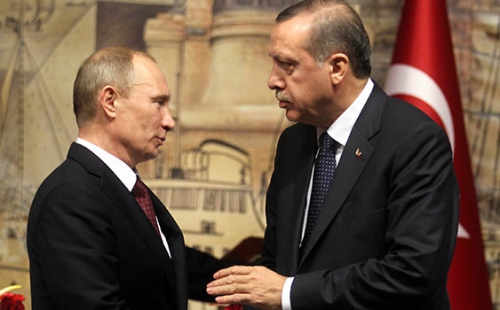
Poutine en Turquie: des relations exemptes de sanctions antirusses et du commerce en monnaie nationale
Le président russe Vladimir Poutine a été accueilli le 1-er décembre à Ankara avec tous les honneurs inhérents au protocole d’une visite d’Etat. L’accueil chaleureux réservé au Kremlin dans un pays de l’OTAN s’accordait plutôt mal avec les allégations de Washington sur l’« isolement international complet de Moscou ». Washington a fait jusqu’à la dernière minute pression sur Ankara pour que les Turcs confèrent à cette visite une froideur officielle. Mais les parties se sont retrouvées en bons voisins.
Au sein de l’OTAN, la Turquie vit en quelque sorte selon son propre calendrier et dans son propre espace politique. C’est le seul membre de l’alliance à avoir refusé de décréter des sanctions contre la Russie à cause de l’Ukraine. C’est aussi le seul pays de l’OTAN à avoir signé avec la Russie plus de 60 traités, accords et autres documents qui réglementent l’approfondissement des relations amicales ainsi que les contacts, les échanges et les consultations entre gouvernements, sans parler de la coopération économique dans divers domaines, de la pêche à l’électronucléaire en passant naturellement par le pétrole et le gaz.
Pendant la visite, au moins dix documents prévoyant d’étendre la coopération économique et commerciale s’ajouteront à ces accords.
D'autre part, la Russie est pour la Turquie le deuxième partenaire commercial derrière l’Allemagne. La Turquie occupe quant à elle la septième place dans le commerce extérieur de la Russie.
Vladimir Poutine est arrivé en Turquie pour intensifier la coopération déjà existante, non pas pour ouvrir de « nouveaux horizons », estime Goumer Issaïev, directeur du Centre d’études sur le Proche-Orient contemporain à Saint-Pétersbourg.
« On sait bien quels domaines de coopération sont prioritaires. D’abord, c’est le gaz russe qui importe pour la Turquie. Deuxièmement, il s’agit de promouvoir le tourisme. En outre, la Turquie livre depuis longtemps des produits alimentaires et agricoles à la Russie. Je ne pense pas que de nouveaux axes seront ouverts pendant la visite. Les orientations déjà explorées seront quant à elles élargies. »
La Turquie ne gagnera absolument rien à décréter des sanctions antirusses, dit pour sa part Aleksandr Vassiliev, expert à l’Institut d’études orientales de l’Académie des sciences de Russie.
« La Turquie est toujours l’un des premiers investisseurs pour la Russie. Les sociétés turques figurent d’ordinaire sur la liste des dix principaux investisseurs dans l’économie russe. La Turquie ne voit pas de raison de rompre ses liens avec la Russie ou de mettre l’accent sur les désaccords politiques qui existent bien sûr. »
La Turquie prône le renversement du régime de Bachar al-Assad en Syrie et refuse de reconnaître le rattachement de la Crimée à la Russie. Cependant, ces désaccords existent séparément des relations économiques qui se développent plus vite que les rapports politiques. Globalement, la Turquie et la Russie sont parvenues au cours de leur histoire à se quereller et à se rapprocher de nouveau. On ne peut pas dire qu’il leur était toujours confortable de vivre côte à côte. La vie dans le voisinage était plutôt difficile mais il leur était absolument impossible de vivre séparément.
La Russie et la Turquie vont élargir l'utilisation du rouble et de la livre turque dans leurs échanges commerciaux réciproques, a annoncé lundi le président russe Vladimir Poutine à l'issue de négociations avec son homologue turc Recep Tayyip Erdogan à Ankara.
"Nous estimons qu'il est très important d'élargir les règlements en monnaies nationales dans notre commerce réciproque. Nous ferons tout notre possible pour y parvenir", a déclaré le chef de l'Etat russe.
A cet effet, "nous encouragerons les efforts des institutions financières appropriées aussi bien en Turquie qu'en Russie", a ajouté Vladimir Poutine.
En juillet dernier, Ankara a proposé à Moscou d'utiliser les monnaies nationales dans leur commerce réciproque afin de se débarrasser progressivement du dollar.
En 2013, les échanges commerciaux entre les deux pays ont atteint 32,7 milliards de dollars.
L'idée de passer progressivement au rouble et à la livre turque a été vivement soutenue par Moscou qui juge cette démarche très importante pour réduire le rôle du dollar dans ses échanges extérieurs suite au refroidissement de ses relations avec l'Occident sur fond de crise ukrainienne.
- Source : Andreï Fedyachine
00:05 Publié dans Actualité, Affaires européennes, Géopolitique | Lien permanent | Commentaires (0) | Tags : poutine, erdogan, russie, turquie, proche orient, levant, europe, affaires européennes, économie, géopolitique |  |
|  del.icio.us |
del.icio.us |  |
|  Digg |
Digg | ![]() Facebook
Facebook
UCRANIA: LA LÓGICA EUROPA FRENTE A LA LÓGICA DE YALTA

UCRANIA: LA LÓGICA EUROPA FRENTE A LA LÓGICA DE YALTA.
00:05 Publié dans Actualité, Affaires européennes, Géopolitique | Lien permanent | Commentaires (0) | Tags : politique internationale, géopolitique, ukraine, europe, affaires européennes |  |
|  del.icio.us |
del.icio.us |  |
|  Digg |
Digg | ![]() Facebook
Facebook
Record number of anti-government militias in USA
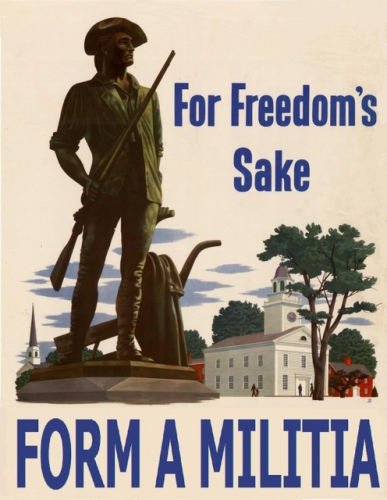
The Militia Movement Continues to Grow: Record number of anti-government militias in USA
Dissent is on the rise.
By Donna Leinwand Leger
USA Today& http://www.attackthesystem.com
Radical anti-government “patriot” groups and militias, galvanized against gun control, will continue to grow even as the number of groups operating in the USAreached an all-time high in 2012, a report Tuesday by the Southern Poverty Law Center finds.
The center tracked 1,360 radical militias and anti-government groups in 2012, an eightfold increase over 2008, when it recorded 149 such groups. The explosive growth began four years ago, sparked by the election of President Obama and anger about the poor economy, the center says. That growth is likely to continue as the groups recruit more members with a pro-gun message, the center’s senior fellow Mark Potok said.
President Obama’s second term and a gun control movement bolstered by the massacre at Sandy Hook Elementary School is intensifying anti-government rage and will lead to more growth for the groups, Potok said.
The Southern Poverty Law Center, a non-profit civil rights advocacy group based in Montgomery, Ala., defines the patriot movement as groups of people who believe the federal government is conspiring to confiscate Americans’ guns and curtail liberties to create a socialist government or “new order.” Most are non-violent citizens groups. Some groups also include militias, which arm themselves and conduct military-style training, the center said.
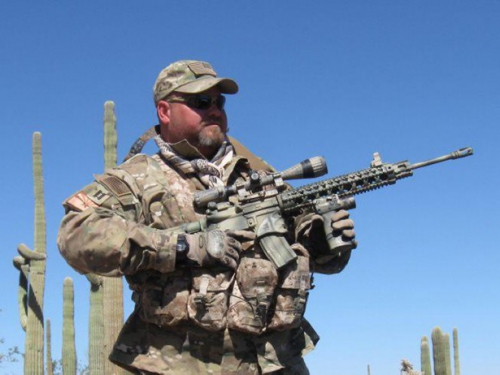
Conservative critics say the center uses its rhetoric to undermine right-wing and conservative groups.
The Southern Poverty Law Center uses its extremism report as a way to raise funds, says Bill Hahn, a spokesman for the John Birch Society, a conservative, anti-communist group based in Appleton, Wis, that advocates limited government. The group is on the center’s list of anti-government groups.
The center “is very adept at creating the specter that armed groups will overthrow the government or that the continuously dying supremacy movement is lurking behind every rock,” Hahn said in a written statement. “The SPLC will continue to utilize fear to fill their bank accounts.”
The John Birch Society opposes violence and urges its members to take action to restore and preserve constitutional freedoms, Hahn said.
Everett Wilkinson, whose Florida-based National Liberty Federation is not listed in the report, says many of the groups simply engage in peaceful rallies and letter-writing campaigns aimed at promoting free markets, fiscal responsibility and limited government.
“The Southern Perversion Law Center is a liberal organization that likes to spread propaganda about right-wing and conservative groups,” Wilkinson said.
He recently sent an e-mail addressed to “Patriots” seeking land “to hold training sessions for prepping, Constitution classes, militia training, medical, alternative communications, etc.” Wilkinson said some of his members had expressed interest in firearms training.
“We do respect people’s right to defend themselves, but we are not a military-type organization or anything like that,” he said. “We’re a grassroots activist organization focused on legislative issues and changing what’s happening in government. We’ve had thousands of rallies since 2009 and we’ve yet to have a violent incident.”
The patriot groups’ rhetoric and some groups’ threats of domestic terrorist plots mirror the mood in the six months before the Oklahoma City bombing, a domestic terror attack in 1995 by anti-government militia sympathizer Timothy McVeigh that killed 168 people, center President J. Richard Cohen said in a letter to Attorney General Eric Holder and Homeland Security Secretary Janet Napolitano. The center has called for a task force to assess the groups.
“In the last four years we have seen a tremendous increase in the number of conspiracy-minded, anti-government groups as well as in the number of domestic terrorist plots,” Cohen wrote. “We now also are seeing ominous threats from those who believe that the government is poised to take their guns.”
The number of anti-government groups grew 7% from 1,274 in 2011 to 1,360 in 2012. The center gathers its data from the groups’ publications, websites, law enforcement, news reports and other sources.
Daryl Johnson, a former domestic terror intelligence analyst at the Department of Homeland Security whose report on the resurgence of the radical right in April 2009 was withdrawn by the department after criticism by conservative groups, said the center’s estimate of radical anti-government groups is low and does not account for some of the most radical groups that operate underground.
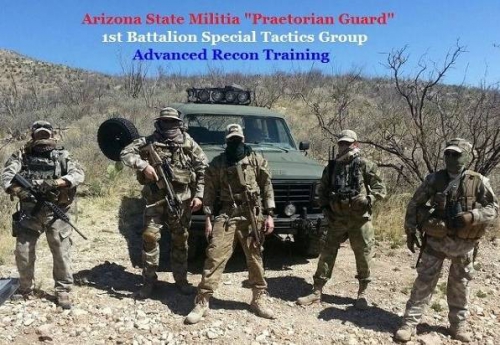
Some groups stockpile weapons and their “ability to inflect mass violence is quite high,” Johnson said.
A January study from the Combating Terrorism Center at West Point found a dramatic rise since 2007 in the number of attacks and violent plots originating from people and groups identified with the far right of American politics.
The Southern Poverty Law Center’s latest count surpasses the record number of groups formed in the 1990s in response to the passage of sweeping gun-control measures in 1993 and a ban on assault weapons in 1994. In 1996, the number of patriot groups peaked at 858, then declined until 2009, the center reports.
Recently, some of the groups have threatened politicians who have proposed gun-control measures, the report says. In one instance, neo-Nazi Craig Cobb posted Rep. Diana DeGette’s address and photograph on the racist, anti-Semitic VanguardNews Network forum after the Colorado Democrat proposed a ban on high- capacity magazines, the report says.
The report cites groups that predicted civil war and tyranny after Obama’s executive orders on gun control, including Fox News Radio host Todd Starnes, who tweeted, “Freedom ends. Tyranny begins” and ConservativeDaily.com’s Tony Adkins, who wrote, “Martial law in the United States now a very real possibility.”
The center quotes the United States Patriots Union, which in a letter to legislators in several states called the federal government “a tool of International Socialism now, operating under UN Agendas not our American agenda.” The group said states should defend freedom and liberty “or we are headed to Civil War wherein the people will have no choice but to take matters into their own hands.”
“Their rhetoric is a barometer of the rage that is building in certain quarters,” Cohen said.
00:05 Publié dans Actualité | Lien permanent | Commentaires (0) | Tags : milices, militia movement, états-unis, politique internationale, actualité, affaires américaines |  |
|  del.icio.us |
del.icio.us |  |
|  Digg |
Digg | ![]() Facebook
Facebook
France, les années décisives
De toutes parts, les convergences catastrophiques se rapprochent de notre pays. La colonisation de peuplement explose, la violence physique et sociale s'aggrave, la pauvreté augmente, nos valeurs de civilisation les plus fondamentales sont attaquées, les ressources diminuent, la nature est surexploitée, bref, nous le sentons tous, notre société s'effondre lentement.
La planche à billets tourne pour maintenir encore quelques temps un système économique et social à bout de souffle financé par la dette. Cette société engendrera bientôt des souffrances à grande échelle et de forte intensité, en particulier à cause de l'échec inévitable du multiculturalisme et de l'invraisemblable politique migratoire, qui bouleverse les populations de la France et de toute l'Europe occidentale. Nos compatriotes commencent à se tourner les uns vers les autres pour se protéger, se lier, se regrouper, se préparer.
La vision d'un monde uni dans la paix, l'intelligence et le progrès matériel, par le jeu de la libre-concurrence, se dissipe. À sa place, reviennent s'imposer, lentement, inexorablement, les vieilles lois du vivant depuis que le monde est monde : Territoires, Ressources, Reproduction. Nous y voilà, à nouveau, finalement.
Cet ouvrage est l'occasion de revenir sur cette période curieuse, la nôtre, faite d'accélérations vertigineuses et de régressions foudroyantes. Dans cette simultanéité, il y a la démonstration évidente que nous vivons déjà, sans vraiment le mesurer, au milieu des ruines et dans le chantier des mondes à naître. C'est le moment d'y voir clair, car la France entre dans ses années décisives.
Pour vous procurer le livre:
https://www.editionsbios.fr/index.php...
00:05 Publié dans Actualité, Affaires européennes | Lien permanent | Commentaires (0) | Tags : laurent ozon, france, remigration, politique, politique internationale, europe, affaires européennes |  |
|  del.icio.us |
del.icio.us |  |
|  Digg |
Digg | ![]() Facebook
Facebook


